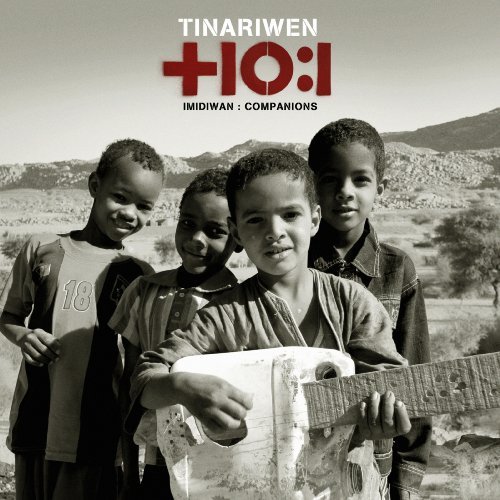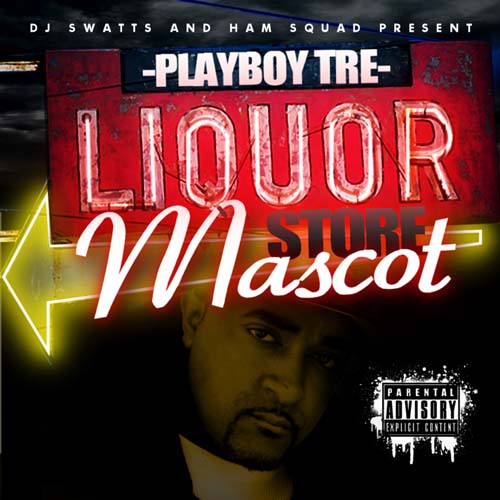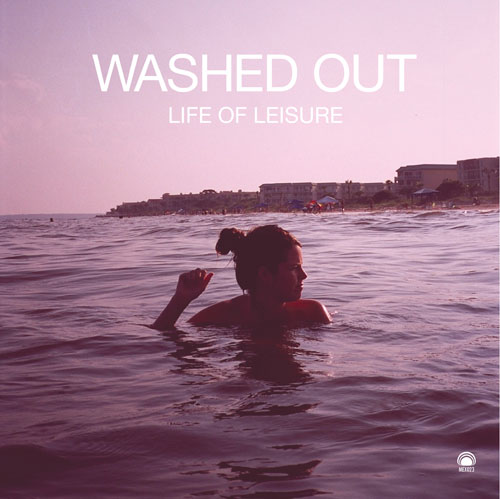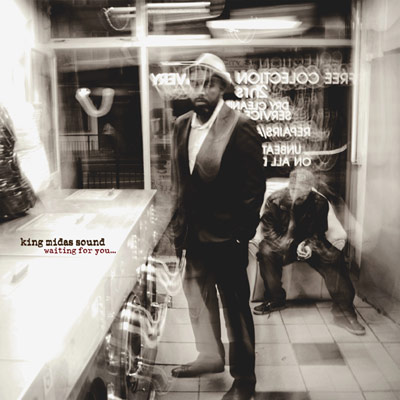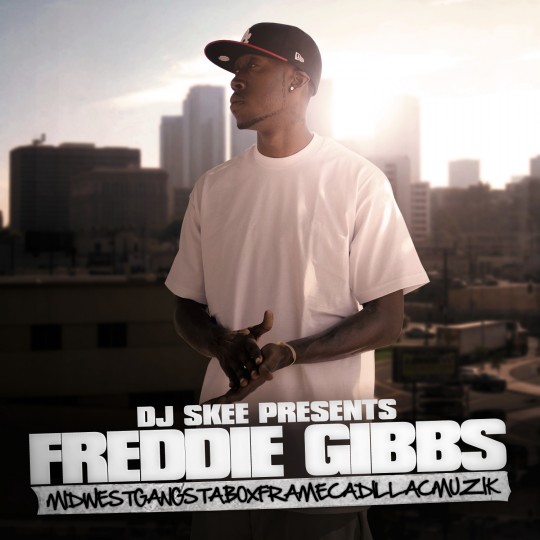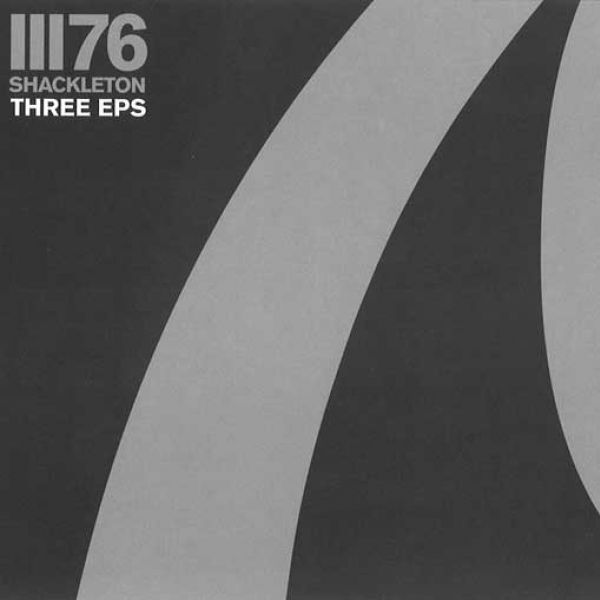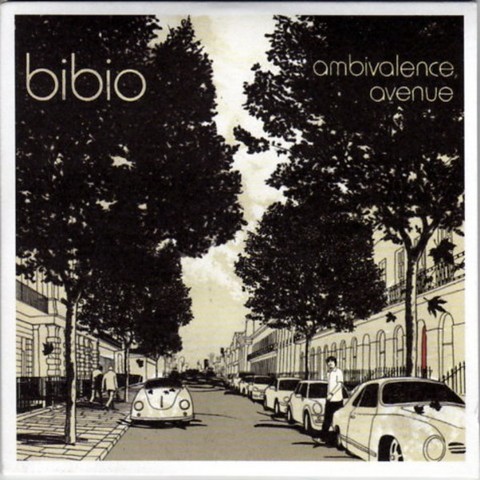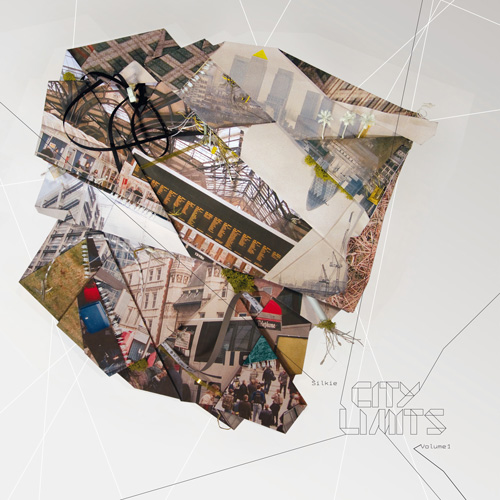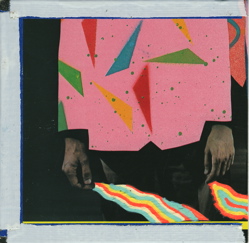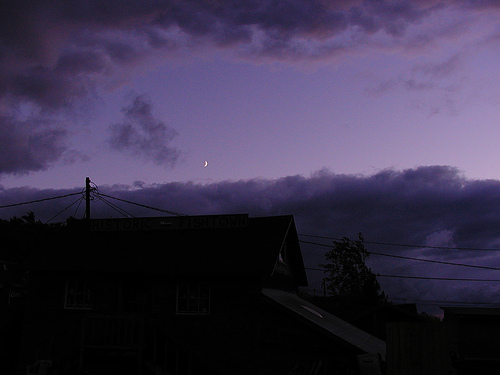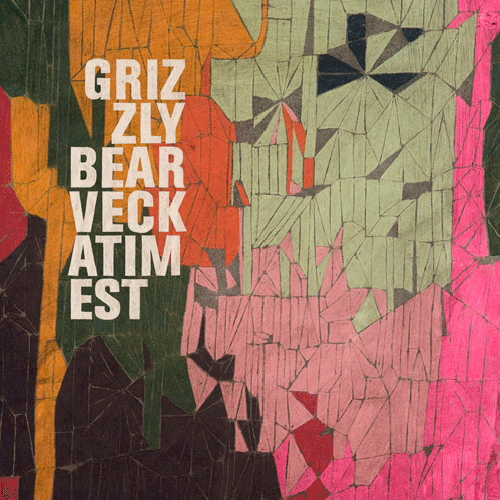Brought to you by our sponsors, Brother Love and The Honky Tonk Man.
25. Diamond District – In The Ruff [Mello Music Group]
Taking artists at their word is a notoriously tricky enterprise. Even allowing for 100 percent sincerity, intentions and ambitions are often discordant with the final results. Luckily, anyone attempting to assess Diamond District’s In the Ruff only has to watch this interview to see that they achieve everything they set out to do: take elements of 90s hip-hop and give them a modern day re-interpretation, with heavy percussion, experimental patterns, and a D.C. go-go influence. As forthright about their influences (Pete Rock, Primo, De La) as they are in displaying their hometown pride, the trio of XO, yU, and Oddisee strike a perfect equipoise between the streets and Fat Beats, with backpack boasts sitting side-by-side next to vivid hood stories, as seen on “Streets Won’t Let Me Chill,” where XO cautions a would-be stick up kid eager to flex. Wale might have garnered the brunt of national attention, but the Diamond District delivered the DMV’s most complete album, one that struck a balance between North and South and came refreshingly HPV Lady Gaga-free. –JW
MP3: Diamond District – “Hologram”
MP3: Diamond District – “Something for Y’all”
MP3: Diamond District – “Gully”
MP3: Diamond District – “I Mean Business”
24. Method Man & Redman – Blackout 2 [Def Jam]
History has since been corrected to acknowledge the original Blackout for the classic it is, so as soon as Red & Meth’s decade-long-awaited Blackout 2 leaked to the internet the call to arms was sounded — “TO THE BLUNTMOBILE!” But while this year’s sequel may not have received the same acclaim or generated quite the same excitement as 2009’s other high-profile franchise reboot (no, not this) Blackout 2 is equally worthy of its name. From blunt-cruising anthems “Dis Iz 4 All My Smokers” and “Father’s Day” to the Ghostface and Raekwon assisted “4 Minutes to Lockdown,” Blackout 2 is strictly for the A-alikes, with Method Man and Redman’s unique chemistry and mastery of the form on full display throughout. Blackout 2 may not have the same classic tracks that endure like “Da Rockwilder” or a “How High,” but you won’t find a more reliably enjoyable rap record this year. –Disco Vietnam
MP3: Method Man & Redman ft. UGK – “City Lights”
23. Danny! – Where Is Danny? – [Self-Released/Def Jux]
Ever since it unexpectedly leaked onto the Internet, Where is Danny? has been dogged by rumors. First, Def Jux allegedly refused to clear the samples–everything from Les DeMerle’s “A Day in the Life,” to Serge Gainsbourg, to Alice in Wonderland. Then iMeem accidentally leaked it. Then it was supposed to be mastered, re-worked, and re-released in the New Year. Now the game of Internet telephone whispers that Def Jux is folding. Pointedly, South Carolina’s Danny Swaim has kept uncharacteristically quiet on the issue and I suspect it’s a strategy than lends itself well to the carapace created by the Carmen San Diego subtext of Where is Danny? Whereas Danny’s previous efforts flashed fragments of brilliance, they were often bogged down by excessive self-absorption. Wisely, Danny recasts himself as a slippery globetrotting man of mystery, ghostwriting for Drake, leaking the infamous Vanessa Hudgens nude pics, and planting gay porno mags on his dad for revenge. A relentlessly creative and dizzying sprawl of orchestral samples, chimerical boasts, and psychedelic weirdness, Where is Danny? expands beyond his obvious De La and Tribe comparisons to create an alter-ego closer to a warmer Lupe Fiasco, minus the self-righteousness and obsessed with Operation Doomsday and Hollywood actresses. Where is Danny? Right now, he’s poised for greatness. -JW
ZIP: Danny! – Where Is Danny? (Left-Click)
22. Tinariwen – Imidiwan [World Village]
Imidiwan’s genesis stems from Tinariwen’s atavistic desire to return the desert. Decamping to Tessalit, an out of the way Sheltering Sky village with communal lifestyle and blistering sun, the Malian-raised rebel’s fourth album marked a return to the raw. Renting an adobe generator-powered home and stripping their songs down to their bleached bone skeletons, Imidiwen is a sandstorm of whirling chants, agile Tuareg guitar lines that crest towards the infinite, and hypnotic drums that burrow deep grooves into your subconscious. There’s an inherent universality to Tinariwen’s wind-ravaged rhythms and their shamanistic ability to summon the spirits of weary blood and forgotten ancestors. Imidiwan means friends, companions, fellow travelers. This is an invitation to explore a world you could never really fathom– a bridge connecting the foreign and the familiar, the crossroads where all lines intersect. –JW
MP3: Tinariwen – “Lulla”
21. Robot Koch – Death Star Droid [Robots Don’t Sleep]
Robot Koch’s Death Star Droid could have made this list based solely on “Memories,” easily one of the year’s finest beats. Check the ingredients: 808s doing the New Jack Swing, a synth-line straight out of an imaginary late 90’s Rawkus release, a totally bizarre Chimacum Rain sample coming out of left field and an explosive chorus combining backwards chanting and a chipmunked R&B vocal snippet. If that’s not a dope ass beat then I don’t know what is. Thankfully, the rest of the record continues down this psychedelic path, throwing in curveballs like twisted California Dubstep, manic Low End Theory approved drum programming and a dedication to incorporating Hip Hop’s sampling culture in a subgenre getting just a little too cold and digital these days. Oh.. and there’s a God damned Trip-Hop Doors cover: a move so ballsy in the face of critical un-cool that you can’t help but root for this guy.–Sach O
20. Wooden Shjips – Dos [Holy Mountain]
A few years ago, Nas remarked, “No idea’s original, there’s nothing new under the sun/It’s never what you do, but how it’s done.”So what are you supposed to make of San Francisco’s Wooden Shjips, who managed to come up with the pretty-damn-good idea of sounding like a classic-rock band covering a trance record? On Dos minimalism is not just a concept, it’s a mantra, repeated over and over and over until it burrows into your consciousness and its insistent grooves become inherently inescapable. So few elements are stretched out to maximum capacity (case-in-point, three of the Dos‘s five songs are driven by what is practically the exact same bassline, clocking in at 20:22 of the record’s running time of 38:13) to where you can hear even the slightest deviation– a botched note, a missed drum-hit, the tripped-out psychedelics dripping off of the lead guitar in “Down By the Sea”– from the locked-in intensity of each song. By the time the bright keyboards in “Fallin'” sputter out, it’s remains uncertain as to whether you should just play Dos again, or sit in silence, realizing that the record’s vast economy of melody has forced you to commit it all to memory. —Douglas Martin
MP3: Wooden Shjips – “For So Long”
19. Paul White – The Strange Dreams of Paul White [One-Handed Music]
As we exit the decade, it’s becoming increasingly clear that J Dilla is rap’s Obi Wan Kenobi: a grandmaster in his own time but more powerful than we could ever imagine in the afterlife. From Stone Throw’s lo-fidelity grooves to the ever-evolving Alpha-Pup/Brainfeeder/Low-End Theory axis to the attics of London and basements of Detroit, Donuts has become the decade’s least-likely touchstone, freeing producers from outdated notions of structure while promoting musical ideas that have proven adaptable to a multitude of styles. Sounding as massive as anything produced by Hudson Mohawke, but filling the space between the cavernous drums with a mix of off-kilter sampling, melodic keys and a funky sense of rhythm, White’s music is made for rocking out. Tunes start at full blast, accelerate for two minutes (or less!) and vanish just as quickly, powered by propulsive head-nod inducing energy. While Paul White has the respect not to use James Yancey’s name in vain (who let Charles Hamilton out of his crawlspace anyways?), there’s no doubt that Detroit’s finest heavily influenced both The Strange Dreams of Paul White and Sounds from the Skylight, exciting albums from a producer who could make some serious noise in 2010–Sach O
MP3: Paul White – “Cheese Special and a Draw”
18. Pill – 4180: The Prescription/ 4075: The Refill [Self-Released]
The video for “Trap Going Ham” made people pay attention, but 4180: The Prescription and 4075: The Refill made people fans. Pill’s got a long way to go. I’m sure he’d tell you the same thing. After all, as Dom Passantino pointed out, search for “Trap Goin’ Ham” on Wiki, and results include “This Ain’t A Scene It’s An Arms Race,” “Hurricane Katrina,” and “List of Step By Step Episodes.” But he struck a chord–not because he’s rapping about anything new–hell, the subject matter on these mixtapes isn’t that much different than anything with a pen and pixel cover. What’s fresh is Pill himself, who obviously earned his spot in Grind Time by being angry enough to rival Killer Mike. No rapper this year carried more anguish and outrage in their vocals than the Pink City phenom–maybe the “Trap Going Ham” vehicle was method acting, but I doubt it. Pill emerged as a powerful voice, one without self-righteousness but with a conscience. And like anyone worth watching, he didn’t give a fuck, but not so much that he was too serious not show the world his secret recipe for Big Boys. Though his music is inevitably heavily influenced by the trap and the style of rap it spawned, he’d rap over anything from Geto Boys to Biggie to Kanye, and more importantly he’d rap extraordinarily well (that is, if you’re one of those crazy apostates who care about that sort of thing). “Trap By Ham” was built on a Beastie Boys sample, which was famously flipped a decade later by The Pharcyde with a video done by the guy who went on to direct Where The Wild Things Are, and was murked once again by a dread-locked Atl rapper with amphetamine energy and barely veiled rage who made it into the pages of the New York Times without a label deal. The industry might be completely fucked, but maybe hip hop’s not doing as poorly as everyone thinks. –JW
ZIP: Pill – 4180: The Prescription (Left-Click)
ZIP: Pill – 4075: The Refill (Left-Click)
17. Playboy Tre – Liquor Store Mascot (Self-Released)
I’ve likened Playboy Tre to friends as Devin the Dude with a lust for booze instead of weed. While the comparison tells a bit about Tre, it’s ultimately facile. What makes both artists great isn’t their enthusiasm for illicit substances, but rather, their honesty. Tre never feels the need to embellish anything, which makes the “sober” realness of songs like “Life Gets Harder” come through stronger. More reflective tracks are set off by brilliant goofball breaks like “Oh My Lord Freestyle,” where Tre spits hilariously overwrought sex rhymes over a gospel break. The stories of Liquor Store Mascot are relevant recession-era parables, but never confine themselves to current events (a single Usain Bolt reference aside). “Everybody’s Looking For Something” flexes an obvious but excellent Eurythmics sample to attack parasitic friends, while “Sideways”‘ examines the perils of being a broke rapper, which especially relevant to 2009. The tape’s latter half takes Tre even closer to the simplicity and honesty of early 80s rap, with “Bleachers,” a flashback to the days when a young Tre rapped in the school gym with the bleachers as percussion. Great writing, strong beats and actually funny skits, Liquor Store Mascot is refreshing.--Aaron Matthews
ZIP: Playboy Tre – Liquor Store Mascot (Left-Click)
16. 5 0′ Clock Shadowboxers – The Slow Twilight (Beat Garden)
Hip hop and the fickle nature of the Internet have made for lousy bed mates in 2009. One wrong move and talent of the stature of Wale or Cudi is pushed aside, while the labels no longer seem interested in conjuring albums from their artists, a one dollar quicky on iTunes being the preferred method for profit generation. So, in a year when the genre seems to be chasing its own tail, finding something as focused and purposefully delivered as The Slow Twilight is like stumbling onto the middle rail. This is soul-searing music, crackling with coiled aggression and a biting humour. Shadowboxers’ MC, Zilla Rocca, king hits with his rhymes as he shreds society, the biz or even just himself, and he careens over Douglas Martin’s precision-deployed sampology, the producer parsing enough vinyl ammunition for three LPs before folding it all into one. The Slow Twilight is rap music front-end loaded with killer instinct and a desperate perspiration, and it just might be the best hip hop record you’ll hear all year. –Matt Shea
ZIP: 5 0′ Clock Shadowboxers – The Slow Twilight (Left-Click)
15. Washed Out – Life of Leisure EP [Mexican Summer]
Winner of the prestigious “most appropriate band name” award, Washed Out sounds…well, Washed Out. Built on hypnotic, looping samples played through what sounds like a 3rd generation VHS dub, Life of Leisure is 20-something background music that’s not ashamed of what it is. Bearing a stronger hip-hop influence than his glo-fi contemporaries Neon Indian and Memory Tapes, producer Ernest Greene lets his loops ride out and repeat with little regard for traditional structure before cutting it short, throwing in indecipherable reverberated vocals for good measure. Album highlight “Hold Out” ups the tension a bit, but for the most part Life of Leisure is content to be “chill wave” music for the perpetually stoned, landing at the intersection of Madlib, Café del Mar and the soundtrack to your dad’s old porn collection. After a few years in the critical wilderness, 2009 was the year mood music made a dramatic comeback in the minds of the critterati and Life of Leisure’s textured grooves lead the way, standing at the forefront of indie’s newfound love yacht rock. I still refuse to call it hypnagogic pop though. –Sach O
MP3: Washed Out – “Feel It All Around”
14. King Midas Sound – Waiting For You [Hyperdub]
We kill Soundbwoys with our Shaolin Style…
Drive dem from the dancefloor wipe da tears from their eyes…
So begins King Midas Sound’s Waiting for You. Blowing past the inevitable comparisons to The Bug’s London Zoo, King Midas’ sound comes closer to the blunted soul of Hyperdub label mates Kode9 and the Space Ape, merging and reshaping Jamaican and electronic music to reflect life in 21st century London. Vocalists Roger Robinson and Hitomi whisper sweet nothings, dire threats, existential dilemmas, sound advice and simple truths into the microphone while studio wizard Kevin Martin amplifies and crushes the sonic environment, soaking the record in reverb and static. Equally indebted to the lo-fi DIY attitude of 70’s Roots and the heaviness of contemporary sound systems, the album’s sonic character is torn in opposite directions, simultaneously rumbling with bass and echo. Most importantly however, this handcrafted atmosphere is put in the service of some of the most haunting songs in contemporary memory, touching upon heartbreak, self-destruction, love and misery without ever feeling clichéd. As we leave a decade that dealt with its problems by dancing the night away before crashing into a socio-economic disaster of untold proportions, King Midas Sound is just the “cool out” that the world needs to find its bearings. –Sach O
MP3: King Midas Sound – “Cool Out”
13. Memory Tapes – Seek Magic [Acephale]
I couldn’t find a single Memory Tapes review that didn’t refer to glo-fi, summertime, narcotics, the 80’s, the beach, nostalgia or the sun. Let me give it a shot. As I’m writing this it’s 6 below Celsius in Montreal and “Bicycle” is booming out my headphones. The euphoria of the coda somehow fits perfectly with the chilliness of the synthesizers and the Bernard Summer-aping guitars remind me that New Years is fast approaching. As the track fades into Green Knight and the sun sets over the city, I’m shocked at how dark this record is. Divorced from the context forced upon it by eager bloggers hungry for a new “movement”, Seek Magic is a series of regretful, nocturnal songs that split the difference between dance-music grooves and minor key melodies. It’s propelled not by tape hiss but by power of its drum programming. It’s not about living in the past but living for the moment. It’s one of the best records of the year. –Sach O
12. Freddie Gibbs – midwestgangstaboxframecadillacmuzik/Miseducation of Freddie Gibbs [Self-Released]
If we’re truly being honest with ourselves, the only inevitable conclusion that one can draw is that the once proud phylum of “gangsterappus americanus,” is currently languishing in cess pool of artistic bankruptcy and cliche. Not only that but as I sit and write this, perhaps four out of the five biggest gangster rappers in the country are either currently sitting in a prison cell or on their way to the land of group showers and blanket parties. Even the most fundamentalist of gangster rap fans have to know deep down that this is not a good time for the genre. Enter Freddie Gibbs and his two remarkable genre-reviving mixtapesmidwestgangstaboxframecadillacmuzik and The Miseducation of Freddie Gibbs.
What makes these two tapes so remarkable isn’t that he’s reinventing the entire genre in his wake. Quite the contrary, Gibbs instead borrows elements from swaths of mid-90s artists, including Bone Thugs-N-Harmony, Twista, UGK, Biggie, Tupac, Scarface and Nas, to synthesize their styles. His rapping style is straight forward and fluid, delivering cold, unvarnished tales of struggle in his hometown of Gary, Indiana. These mixtapes flow like the classics that spawned them with minimal filler and stand out tracks like “Womb 2 The Tomb,””County Bounce”, and “In My Hood” will have you humming the melodies and singing the hooks. The subject matter is familiar but Gibbs is able to breathe life back into the flagging genre by going back to the basics and simply rapping his damn ass off. –Doc Zeus
ZIP: Freddie Gibbs-”Midwestgangstaboxframecadillacmuzik”
ZIP: Freddie Gibbs-”The Miseducation of Freddie Gibbs”
11. Shackleton – 3 EP’s [Perlon]
Shackleton’s Three EPs presents an interesting conundrum. Listening to it on anything less than a massive sound system doesn’t do justice to the immensity of the bass (don’t even try on earbuds) but paradoxically, it’s entirely too dark to get played out at your standard Dubstep night. An evil mutant of bass music armed with sharp teeth and extremely live sounding drums, the record feels wrought into existence to soundtrack the Universe’s darkest chill out room: a place where threatening people smoke tainted kush to intentionally get as paranoid as possible. On one hand, this singularity is unwieldy; I can’t imagine too many circumstances where I truly want to feel pure emptiness. On the other hand, for those rare cases where I DO want to feel absolute mechanical dread, Shackleton’s Three EPs stands unrivalled, pushing the frontiers of experimental electronic music past the point of no return into Lovecraftian territory populated only by what lurks in the corner of my imagination. Maybe I’ll open that chill out room…–Sach O
MP3: Shackleton – “It’s Time for Love”
10. DOOM – Born Like This [Lex]
The skeleton key to “Born Like This,” comes in the coda of “That’s That.” Like an off-balance Biz Markie, Doom bellows “Can it be I’ve stayed away too long? Did you miss these rhymes when I was gone? As you listen to these crazy tracks / Check the stats, and you know where I’m at.” Born Like This marked a redoubled dedication to craft, with a self-imposed two year exile giving Doom’s comeback a steroid-inflated statistics. With an enigmatic lyric book capable of political and personal interpretations, and a sound-bed of shadowy graveyard beats from Madlib, J Dilla, Jake One, and Doom himself, the villain reminds us why he came to conquer in the first place. The voices of Slug (Atmosphere), Ghostface Killah, Chef Raekwon, and Charles Bukowski, float in and out like disembodied spirits. Even fellow most miserable candidate Thom Yorke emerges from the London fog to remix “Gazzillion Ear.” The result is another classic addition to an abyssal catalogue and more evidence that DOOM is a first-ballot lock for the Hall of Fame. –JW
MP3: DOOM – “That’s That”
9. Bibio – Ambivalence Avenue [Warp]
Ambivalence Avenue is the sound of someone else’s childhood, filtered through dusty, warped records and faded photo albums. Bibio takes the strengths of his previous records’ folk-tinged electronica and fleshes the individual genres out until the songs grow past genre pastiche. Here gentle folk meshes freely with electronic sounds and programmed samples. Even when working with samples, Bibio gives the songs a real human warmth and organicism. And make no mistake, these are excellent songs, spanning a dazzingly diverse array of sounds within its 12 songs. Check the lite funk workout of “Jealous Of The Roses”, the fireside singalong of “Lovers’ Carvings” or the transcendent Jaylib-esque vocal chops of “Fire Ant.” Ambivalence Avenue takes a few listens to really grasp the album as a whole–for the Cliff Notes version, listen to “Dwrcan.” Avenue’s final song encapsulates the genius of the album within its nearly six minute run-time, as beer can percussion gradually evolves into an amorphous beat creature that encompasses electronica, folk and hip-hop. Ambivalence Avenue pulls the neat trick of simultaneously sounding like the future and the past. –-Aaron Matthews
MP3: Bibio – “Ambivalence Avenue”
8. Black Moth Super Rainbow – Eating Us [Graveface]
Of course, nothing’s more trite than experimental bands claiming they’re really just making pop music (see Collective, Animal), but Black Moth Super Rainbow actually has a case — though its screwball pop is closer to Urban Top 40 than the pabulum rock that KROQ pushes. After all, with T-Pain, Kanye West, Lil Wayne et al. smitten with autotune, and Roger Troutman suddenly as influential as anyone sub-Prince, Tobacco’s use of vocoder feels au courant — except that they’ve been doing it since T-Pain was fishmongering in Florida. Indeed, few contemporary outfits can top the surfeit of honeycombed melodies and kaleidoscopic textures shading the music. Produced by Dave Fridmann, Eating Us boasts an expansiveness, symphonic majesty and idiosyncrasy redolent of The Soft Bulletin. But the Pittsburgh sextet still manages to traffic in the idea of sound as color, putting them in the same camp as polychromatic kinsmen Caribou and Edan. And yeah, these guys don’t smoke weed but there was no better album made this year that was more ideal for runs to the 7-Eleven and back. –-JW
MP3: Black Moth Super Rainbow – “Twin of Myself”
7. Silkie – Vol. 1: City Limits [Deep Medi]
While Hyperdub stands tall as bass music’s go-to label for forward thinking experimentation, a direction that’s earned it crossover-success and critical darling status, no label commands respect in the Dubstep world quite like Deep Medi. While the label’s founder Mala of Digital Mystikz continues to stubbornly resist the album format, Anti Social Entertainment member Silkie was glad to oblige us with their first full length. Pushing forward a vision of electronic soul that draws from Kraftwerk, Prince, Timbaland, The Neptunes, Detroit Techno and Dub Reggae and highlighting a deep progressive garage influence, City Limits is as smooth as its creator’s namesake. Combining 2-step’s sophistication with the sheer power of Dubstep’s obsession with percussion and low end, the sequencing’s mechanical precision was a welcome tonic in a year where every other producer was biting Dilla’s unquantized drums. Heavy yet progressive, dark but colorful, City Limits is exactly the kind of album we’d been waiting for from Dubstep’s realest label: one that moved the mind but remembered that the music was about the body. –Sach O
6. Javelin – Jamz n Jemz [Self-Released]
Jamz And Jemz is the vaguely remembered detritus of the past collected, re-arranged and pressed onto a CD. Pasting oddly recognizable fragments (an ODB adlib here, Tom Tom Club synths there) the Brooklyn duo piece them together into warmly nostalgic songpieces. Channeling the unfettered creativity of childhood and filtering it through synths and stretched samples that owe an self-admitted debt to a certain box of Detroit donuts, Javelin’s music reminds you what a joy it is to be alive. Using recognizable signifiers of happiness (Motown handclaps, vocal snippets, and squeaky synths, Javelin flip samples in brilliant and unexpected ways. The woozy organs and perky strings of “Tell Me What Will It Be (Take 2)” create the aural equivalent to exploring the sandbox on a hot day. Elsewhere the band turns dated sounds new, with tracks like “Lindsey Brohan” and “Vibrationz” finding new gems in the much-plowed terrain of synth pop. The short length of each track makes Jamz and Jemz perfect daydreaming music for the ADD generation. I don’t care if it’s winter, grab a popsicle and go lie outside for a few hours while listening to this. –Aaron Matthews
MP3: Javelin-”Flicker and Flutter (Future Islands/Javelin Remix)”
5. Sunset Rubdown – Dragonslayer [Jagjaguwar]
Something’s awry on Dragonslayer, Sunset Rubdown’s third record as a full-band; on both the opening and final tracks of the record, confetti is heavily-peppered all over the foreground. “Silver Moons” references it as a relic of the fargone past, and in “Dragon’s Lair,” it just happened the day before, giving songwriter Spencer Krug an excuse to be tardy for whatever war he’s supposed to fight later in the song. Somewhere in-between, the tension rises (“Idiot Heart”, “Black Swan”) and falls (“Apollo and the Buffalo and Anna Anna Anna Oh!”) throughout, complete with everything that makes Sunset Rubdown so great: the harmonic interplay between Krug and Camilla Wynne Ingr, the tightly-wound buildup and cathartic crash of the drums, the mystifying, downright-heroic guitar work, and let’s not forget Krug’s trademark brick-thick lyricism. On top of all of that, Dragonslayer sounds livelier and more freewheeling than the Sunset Rubdown records before it because it was recorded off-the-floor, which gives a lighthearted feel to songs like “Paper Lace”, and makes the rigid thump of “Nightingale/December Song” sound even more ominous. In true Sunset Rubdown fashion, surprises are abound, and the biggest one of all is that the catchiest song on the record is the 10-plus-minute, three-movement opus that is the closer and quasi-title-track “Dragon’s Lair,” where it is heavily implied that Krug has bigger fish to fry. Between that and the bouncy dramatics of “Silver Moon” way back at the record’s beginning, there is this feeling evoked that Krug is embarking on some sort of journey, as if the Sunset Rubdown records weren’t fully-realized epics to begin with. Either way, it is time for a bigger kind of kill. –Douglas Martin
MP3: Sunset Rubdown – “Idiot Heart”
4. Joker – Purple Wow Sound [Self-Released]
Synthesizing the purple-colored futurism of his early singles with the work of contemporaries Gemmy, Guido, Silkie and a few others, Joker’s Purple Wow Sound Mix is the sound of pop’s future. A 40-minute crash-course on the year’s most exciting tunes, Joker smashes each track together into the world’s greatest videogame soundtrack, creating 40 minutes of neon, THC soaked music that had critics calling him producer of the year without him even dropping an album. Combining Dubstep’s original heaviness with a coloring-book bright palette of synths, the Bristol based producers at the core of this mix struck a chord with anyone who’s ever wasted a night on Mega Man 3, replacing bass music’s recent lager soaked aggression with a psychedelic delirium. Bleeps bump into each other, drums shuffle like Timbaland in 98 and melodies take the center stage offering ideas as compelling as anything in pop music today. With Joker’s full-length promising to push past the 130BPM constraints of the dance floor, The Purple Wow Sound mix will stand as the defining document of Wonky’s earliest moments when it was still tied to the underground scene that birthed it. Ignore at your own peril and that goes double for last decade’s super producers: the only way these kids won’t knock you out your spot is if they decide your mainstream production model is too boring. –Sach O
ZIP: Joker – Purple Wow Sound (Left-Click)
3. Grizzly Bear – Veckatimist [Warp]
You would have thought Veckatimist was to be hand-delivered by Jesus Christ, such was the slobbering anticipation concerning the third album from Grizzly Bear. But what these four bookish sorts from Brooklyn eventually delivered quietly popped the twin bubbles of pretentious hype and inevitable backlash that awaited it. There was no perfect storm upon release, the album’s slightly obtuse nature seeing it instead become one of the stately growers of 2009, its virtues unfolding delicately like the pages of a dusty pop-up book. In terms of artistic progression there was nothing too revolutionary, the band simply taking the fallow lot left after Yellow House and growing something just as ambitious but more keenly focused. The music’s many layers are now quilted together tightly, the progressions firmer in their direction and the harmonies delivered with a precise restraint. Grizzly Bear have seemingly conjured the golden hues of an American past, when hardwood floors and Lucky Strikes hummed to the verses of Kerouac and Frank O’Hara. It may have its imperfections, but Veckatimist is such a strong album that even the faults become part of its dizzying charm.–Matt Shea
MP3: Grizzly Bear-”Cheerleader”
2. Nosaj Thing – Drift [Alpha Pup]
2009 will be remembered in many ways. It was the year of Raekwon, of Gucci Mane, of Susan Boyle. The death of Michael Jackson, the chillwave invasion, the three-headed hydra of hype that was The Dirty Projectors, Animal Collective, and Grizzly Bear. And maybe even for things that have nothing to do with music (shocking, I know). But few people states-side will remember it as the year that dubstep exploded. And I’m not talking in terms of popularity–though the genre certainly has a shot at being able to get a room at the next Hard Rave LA, one over from over Armand Van Helden and Sasha “Medieval” Digweed. But rather, that this was the year in which the Hyperdub and Deep Medi nerve center split into a half dozen different localities, with Glasgow, Los Angeles, London, San Francisco, Bristol, and Berlin, affecting their own regional accents. Most interestingly, a brilliant young crop of producers emerged and expanded the sound’s black and gray palette, adding an astonishing array of color and a pronounced G-Funk and J Dilla influence. It became bass or funky or wonky, or purple or [insert any flavor of Skittle here].
In Los Angeles, the Low End Theory crowd delivered on the promise flashed in ’08 by Flying Lotus, with Drift and Nosaj Thing becoming this year’s standard bearers. I’ve written a lot of words on this record and I’d prefer not to rack my brain for meaningless adjectives already expressed better. It “exists in its own dimension and feeds off its own exhaust: full of alien choirs, conquered computers, and refracting stained-glass light.” It’s “brighter than the harsh black and whites of dubstep and learer than Flying Lotus’ blurry radio transmissions.” It’s best heard “at 35,000 feet at 3 a.m with a pair of steroid-strong headphones and zonked on a quart of red wine.” Combining G-Funk and Bach, Cornelius and Shadow, Boards of Canada and Radiohead, into an ethereal gorgeous gestalt, Jason Chung created my favorite album of the year. It was originally intended to be number one–the work that signaled the depth and brilliance of the Los Angeles talent pool–but I suspect that it’s only the start. There is plenty of time and there are plenty of directions to go. It’s important that Nosaj Thing understands the nature of drift because he’s going to be one of the anchors for a very long time. –JW
MP3: Nosaj Thing – “IOIO”
1. Chef Raekwon – Only Built 4 Cuban Linx 2 [Ice Water H20/EMI]
“No man can judge for another
But each man must weigh all facts and circumstances
And find truth in his own judgment of righteousness”
– Poppa Wu, “North Star (Jewels)”
A day after the release of Only Built 4 Cuban Linx Part II, Raekwon took to the stage of New York’s S.O.B.’s to perform a brief set at an event sponsored by Hot 97. For the second of what would be three consecutive days the Chef’s comeback album, the long-awaited sequel to a genre-defining classic, stood at the top of iTunes albums chart. And while Jay-Z’s blockbuster Blueprint III would eventually ensure the honeymoon didn’t last long, on this night Raekwon is positively glowing in his minor triumph. The early reports were in: against what seemed like insurmountable expectations and almost 14 years of anticipation, Raekwon did it: Only Built 4 Cuban Linx Part II exists; Only Built 4 Cuban Linx Part II is great.
Only Built 4 Cuban Linx Part II is true.
The energy of the crowd never wanes, even as performances of new material interrupt beloved early Wu-Tang classics. Sensing their enthusiasm and perhaps moved by the crowd’s response, Raekwon pauses mid-performance to reflect on his achievement and offers the crowd his sincere appreciation.
“Y’all let me feed my family with this.”
It was a moment of shared genuine gratitude between artist and audience seldom seen, even in an era where the people we admire most are but a tweet away.
There have been 50 albums on this list. All of them are good to great albums (even the ones some of us don’t particularly like). Some are more enjoyable than others; some are more interesting than others; some are more important than others. But providing a consistently rewarding listening experience is the bare minimum. Great albums capture moments and truly significant albums extend them, providing the foundation for a community to grow.
From the “Punch-you-in-the-face music” of “House of Flying Daggers” to the boiling fury of “Penitentiary” to the heartfelt tribute of “Ason Jones,” Only Built 4 Cuban Linx Part II is the product of a profound vision, uncompromising in virtually every respect.
But an album as conceptually adventurous as Only Built 4 Cuban Linx Part II requires its community to help build its believable world. With production by rap’s Mount Rushmore: RZA, Dr. Dre, J Dilla, Pete Rock, Marley Marl (All I wanted for Chanukah was three more minutes of “Pyrex Vision.”) and guest appearances by Beanie Sigel, Jadakiss, Styles P, Busta Rhymes, Slick Rick (!) and the entirety of the Wu-Tang Clan (no U-God, though. Shuck in many ways the album served as a rallying point for some of the hip-hop community’s most valuable members
With Only Built 4 Cuban Linx Part II, Raekwon didn’t simply deliver a stellar album; he reasserted the voice of his community. The times demanded a sequel to Only Built 4 Cuban Linx worthy of its legacy, not only for Raekwon’s career but for the foundation his career rests on. Its success proves there remains a passionate audience with a passionate desire for passionate hip-hop, and makes it that much more possible for veteran artists like himself to earn a living in the genre they helped create.
I don’t believe hip-hop is in a “state of emergency.” I never have. I won’t begrudge anyone who enjoys Gucci Mane or jerkin’ or Slaughterhouse or Asher Roth or when Lil’ Wayne plays the electric guitar like he’s 8-years-old. But I do believe hip-hop suffers when each generation’s contribution must come at the expense of the previous, forcing another era of meaningful music to be dismissed and sucked under the rip tide of “old school.” Selecting Only Built 4 Cuban Linx Part II as “Album of the Year” isn’t about nostalgia or traditionalism. It’s about acknowledging artists like Raekwon deserve to remain viable, especially if they’re still capable of creating music as powerful as this. Hip-hop only stands to gain if its past achievements can be preserved and those responsible for them can endure.
Back at S.O.B.’s, Raekwon just finished performing the insistent “10 Bricks.” The music stopped, he grins and repeats the song’s pivotal line: “We the last skippers.”
”It’s a new industry,” says Raekwon as the show comes to a close, “but this is a real heart right here.” –Disco Vietnam
MP3: Raekwon ft. Ghostface Killah & Cappadonna – “10 Bricks”




